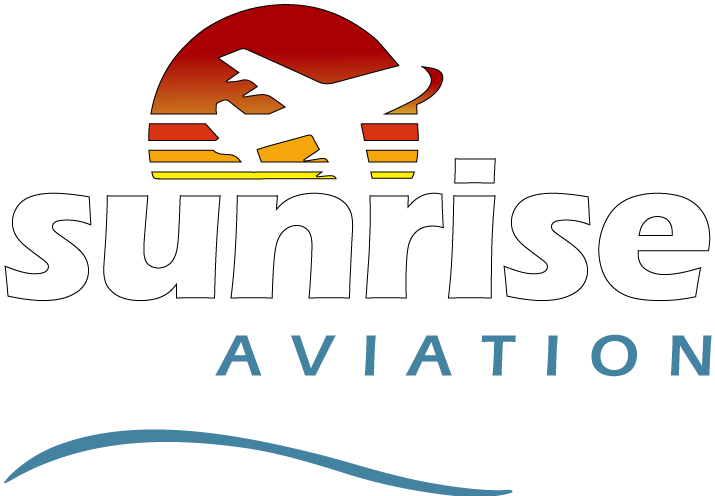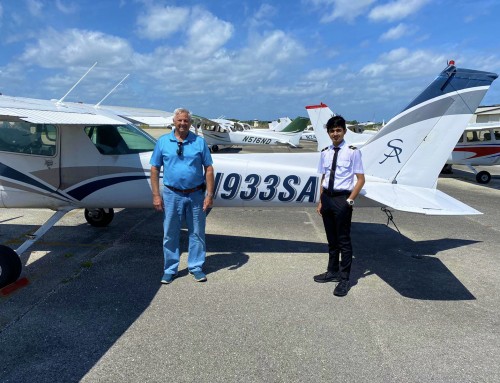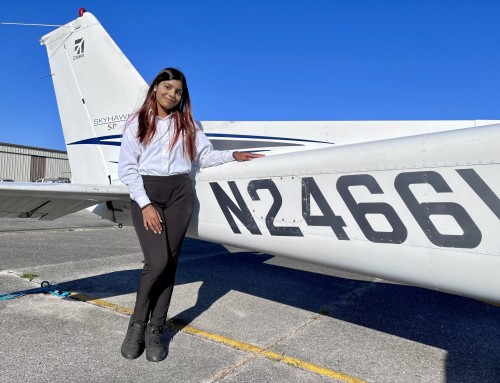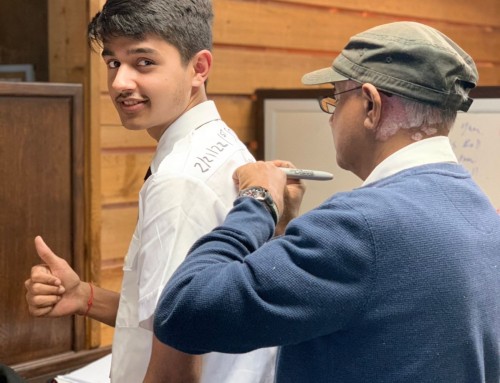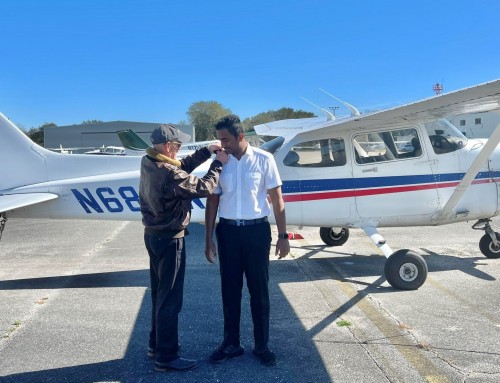Brian Scott-Thomas provides an in-depth summary of APATS 2017, which saw 572 attendees across 47 airlines and 40 different countries.
The Asia-Pacific aviation market is experiencing a major boom, and the global trend is also on an upward trajectory. Henceforth, collaboration between all the stakeholders in the industry is of paramount importance to ensure the safe expansion of the system, and that collaboration in training has been one of the main topics discussed at the 14th Asia Pacific Airline Training Symposium (APATS) recently. The annual event once again convened the aviation training industry players at the Marina Bay Sands on August 29-30, 2017. Improving training methods for pilots and cabin crew is the overarching theme of the symposium.
Booming Aviation Industry
According to statistics, the Asia-Pacific region is the fastest growing commercial aviation market, due to the increasing number of airline companies being established in recent years and fleet growth across the region. The Asia-Pacific airline industry is expected to grow at a rate of 4%-5% per year in the next years. However, the challenge ahead lies in the measures to be taken in selecting, training, and retaining the right personnel for the job. Captain Yann Lardet, General Manager, Airbus Asia Training Centre-Singapore, in his keynote address said that the stakeholders in the aviation industry must have a think-out-of-the-box approach in addressing this matter. He said that, the players in the industry must be aware of the needs of the job market, and be ready to identify completely new future jobs, many may involve big data as an example, to ensure the vibrancy of the industry. Captain Lardet also stressed the need for right-sizing and finalising a robust training structure for aviation personnel.
Moreover, the coming years will see the rapid development of aircraft technology. These will definitely be exciting years for pilots and crew, and especially for those in the maintenance sector. For pilots alone, it is estimated that about 255,000 personnel are required for the next 10 years. From this figure, about 85,000 pilots are needed in the Americas, 50,000 in Europe, 30,000 in Middle East and Africa, and about 90,000 pilots are needed in the Asia-Pacific region.
The need for maintenance personnel is even higher.
Therefore, it is critical to maintain a highly-skilled workforce. The crux of the matter is, not only the quantity of training, but also the quality of that training. We must provide new, as well as established aviation personnel, the correct training that they need to enable them to perform the task better.
Better Training for Better Crew
Therefore, this year’s APATS focussed more on providing personnel, pilot and cabin crew alike a new approach to training. In the next few years, there will be a fundamental shift on how airlines view training for their personnel. Training will be more focused on enhancing the skillsets of personnel to compensate for a lack of experience.
With this in mind, CAE is taking a progressive step forward towards its approach in pilot training. Captain Tobjorn Wischer, Global Leader Training Strategy, CAE, in his presentation, stressed the importance of training the pilots according to the airline’s standard operating procedures. This is done to ingrain and protect the airline’s work culture. Hence, the role of the training instructor is very important in steering the pilot’s career from day one. Captain Wischer said that CAE has taken an innovative approach in improving pilot’s training. The company has come up with objective pilot assessment and training data analysis. The tool, called the next-generation training system enablers, consists of an electronic lesson plan, SOP integration system, electronic grading, electronic data records, summary of life scoring and training data, and summary of training and proficiency trends.
Captain Wischer later gave a scenario on how the next-generation training technology is deployed on CAE-built full flight simulator (FFS) in a facility in Kuala Lumpur. He said that life detection and assessment of training data capability has been proven on more than 20 manoeuvres which provides for life scoring and instructor feedback.
Accommodating the training needs of young pilots is a different ballgame altogether. According to Anna Kjaer Thorsoe, Operations Manager, Center for Air Pilot Academy (CAPA), new pilots, face more challenges when they first step in the business, which ranges from expensive training, little commitment from the airlines, little obvious career path, and potentially bogged down by legislation. The airlines have a set of challenges as well, which include the big gap between modular commercial pilot training (CPL) and airline-ready pilots, the expense of extra training, and very little loyalty among pilots. Airline companies may also face the long lead time for multi-crew pilot license (MPL), the lack of standards for multi-crew cooperation (MCC) and jet orientation course (JOC) training, and pilot’s low pass rate, which is a big loss in potential. To address this, Thorsoe stressed the importance of bridging the gap between pilot and the airline companies by providing the MCC training according to ‘airline pilot standards’ (APS).
Airlines will benefit from APS in terms of a higher standard of new entry first officers, safer training and line operations, reduced training costs, and reduced management. For the training industry, APS guides them to set standards in terms of offering job offers to pilots, it increases training standard, and rewards high-standard authorised training organisations (ATO). Meanwhile, the pilot will benefit from enhanced pilot education, which leads to higher passing rates and fits them for find better job opportunities, for CAPA this assists them attain and average pass rate of 80%.
Dr. Kathleen Quigley, Associate Professor at Embry-Riddle Aeronautical University – Asia, presented an interesting topic on preventing the talent gap trap. With the rapid growth of the aviation industry, which leads to more demand for airline personnel and air traffic controllers, Dr. Quigley’s presentation stressed on initiating the change in training concepts to train these personnel adequately. A possible solution for this, according to Dr. Quigley is having close collaboration between the governing bodies, educators, and aviation organisations. The collaboration could be in terms of establishing an aviation advisory board, creation of a joint certificate programme and giving the chance to students to pursue dual degree programmes. All parties benefit from this approach. The governing body benefits with the ability to provide appropriate training and application methods. The educators will be happy to see that their students are employable, while aviation companies benefit by getting new talent and updating skillsets.
Next was a joint presentation by representatives from an Authorised Training Organisation (ATO) and an airframe maker; Philippe Crebassa, Vice-President of Ecole Nationale de l’Aviation Civile (ENAC) and Christian Commissaire, Managing Director, ATR Training Centre. They gave insights into the collaboration between aircraft manufacturers and ATOs, by providing their own joint efforts as an example. With the increasing demand for regional pilot supply, ATR and ENAC complement each other’s needs, and at the same time, building on the pilot’s end goal. The ATR- ENAC collaboration bears fruitful end results for all parties involved. While ENAC provides ab initio training for pilots according to the EASA standard, ATR provides the specialised training, in this case a type rating course on the ATR42/72 aircraft.
The joint training programme benefits aircraft operators in terms of the ready supply of locally-sourced trainees, which enables a more stringent screening process in selecting pilots. ENAC and ATR can also jointly monitor the performance and behaviour of the future pilots – the EASA-compliant first officers who are groomed as captains in the future.
The Asian Way of Doing Things
Dr. Jin Ho Choi, Deputy Director from the Korean Ministry of Land, Infrastructure and Transport shared with the audience on the South Korean government’s initiative on an aviation fostering programme. Dr. Jin explained the close cooperation between the government, which heads the whole project and provides financial support, Korea Airports Cooperation, and the training provider. Uljin Flight Academy (UFA) for example, provides airline-customised training programmes which grooms future aviation personnel towards employment. This is implemented taking into account the different requirement of flight hours, knowledge, and skills needed by the airlines. UFA provides full scholarship to students from low income families to obtain their private pilot license (PPL), right up to a certified flight instructor (CFI) qualification. The government, in cooperation with Korea Airports Cooperation (KAC) and CAE has set up a comprehensive pilot training system which started with the CPL course in 2010, the Time Build Up (TBU) course, and the recently established jet transition course. In the future, Dr. Jin said that the plan is to strengthen pilot monitoring systems in cooperation with airlines. This is where airlines will be invited onboard the training programme so that they can choose the pilots that they want, and manage the quality of pilot programmes. MPL programmes will also be launched to diversify pilot resources. According to Dr. Jin, there are also plans to extend the programme into the training of maintenance technicians and cabin crews in the future.
Captain Gu, Jian from China Eastern Airlines and Yupin Guan, Chief Technology Officer of Pelesys Learning Systems presented how China Eastern Airlines conducts customised training with computerised adaptive testing. Working with its Flight Safety Technology Institute, the Chinese airline came up with a customised training method based on a closed-loop training platform. The training programme is first implemented onboard the Airbus A320 to train its pilots. An adaptive exam system is then established, where an individualised programme is implemented, where weaknesses are identified, monitored and improved. Each system is based on the Computerised Adaptive Testing (CAT) theory. Here, an analysis is conducted on the difficulty of the question, the ability of the pilot, the quality of the questions and exam. The programme was later expanded to include other airframes such as Airbus A330, A350, and Boeing B737, B777, and B787. It was later expanded to include training for engineers and cabin crew.
Language is Key to Aviation and Learning
There was also an interesting presentation on the importance of English language proficiency to ensure the success of aviation training. Henry Emery, Managing Director of Latitude Aviation English Services demonstrated the universality of English in the aviation context. A majority of aviation professionals do not come from English-speaking background. “The challenge is to make training accessible so that the training is conducted efficiently, so that students can learn effectively,” said Emery. To ensure effective training for students, Emery said that the instructor must be clear in the method of conducting the lessons, taking into account the instructor’s delivery of the presentation and rate of speech. This is because, for students whose English is not their first language, the challenge lies in the fact that they have to be familiar with the subject matter, instructor’s style, accent, and culture. In summary, Emery said that to read and understand aviation training modules, students do not need a list of aviation specific terminology. Instead, students need solid Foundation language, i.e. listening and reading skills and knowledge of the technical language common in science, technology engineering and mathematics.
Emery shared with CAT magazine the importance of language lessons for airline crews. He said that specific-purpose language methods should, like language tests, engage the learner in tasks which represent their professional activities. Language lessons for pilots, maintenance crews, and cabin crews are different because they talk to different target audience. Pilots talk to ATC, passengers, dispatch and maintenance. Maintenance engineers read maintenance and repair documentation and write reports on work completed. Cabin crew talks to passengers and to flight crew. Therefore, language courses will address the needs of learner groups and language lesson content and activities will vary in order to reflect the different on-the-job knowledge and tasks of
the personnel in question.
When asked about the approach that could be used to solve the discrepancies in language learning among personnel in the aviation industry, Emery said that learners need to have access to good teaching and learning tools and valid and reliable measures of proficiency. More importantly, language learning takes dedication and commitment both from the personnel learning the language and their employers; both parties need to believe that language is an important non-technical tool and will help them optimise efficiency and improve safety. “This requires a shift in professional culture which I believe is happening across the industry, slowly but steadily. In my view, it will take a generation for language education and assessment to occupy a place at the core of aviation training and for the industry to meet its objectives for language proficiency.”
CAT (OCTOBER 18, 2017) APATS 2017: Bringing the Key Players Together. Retrieved from: CAT Magazine
